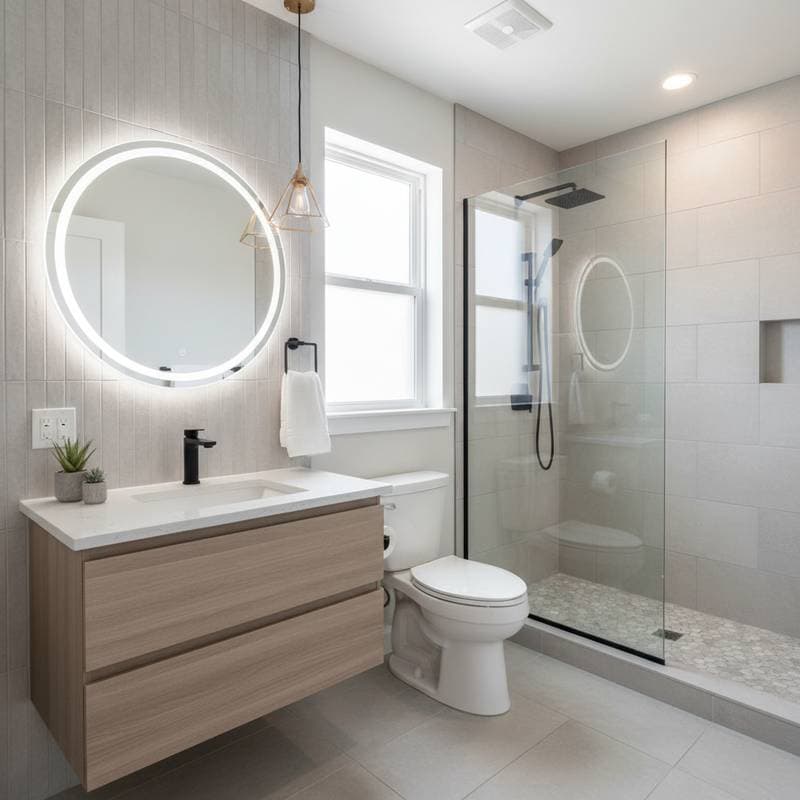2025 Soundproofing ROI: Remote Work's Rising Demand
Home renovation projects cost more in 2025 due to material shortages, yet soundproofing remains a high-return upgrade. Remote work has transformed homes into multifunctional spaces, making noise control essential rather than optional. This shift elevates soundproofing from a mere comfort feature to a practical investment that enhances daily life and property value.
The Real Value Behind a Quieter Home
Soundproofing creates dedicated zones for work, learning, and rest within the same living space. Prospective buyers prioritize acoustic performance in home offices, often inquiring about it before details like room size. Real estate professionals report that properties with soundproofed offices sell more quickly and achieve a 5 to 10 percent price premium over comparable homes without such features.
Homeowners benefit in immediate and long-term ways. The upgrade facilitates focused calls, content creation, or study sessions free from interruptions. Additionally, it provides tangible financial returns during sales or refinancing processes.
Cost Breakdown by Type and Material
Noise often travels through walls, the primary point of transfer. Soundproof drywall or an additional layer of standard drywall with damping compound costs between $1.50 and $4 per square foot to install.
For floors, floating systems with acoustic underlayment range from $2 to $5 per square foot. A more affordable option involves carpet paired with dense padding.
Ceilings benefit from decoupled systems or acoustic tiles, priced at $2 to $6 per square foot, which significantly reduce sounds from above.
Doors and windows require targeted solutions. Solid-core doors begin at $200 per unit, while double-pane acoustic windows cost $700 to $1,200 including installation.
Prioritize walls and windows to address external noise from streets or neighbors. For internal household sounds, incorporate treatments for doors and floors.
Timing Your Project Right
Schedule soundproofing during spring or fall. These seasons feature moderate temperatures that allow adhesives to cure effectively, and contractors face fewer backlogs than in summer.
Supply chains for materials remain constrained, so order insulation and specialty drywall well in advance. Anticipate delays, particularly for imported acoustic panels or custom windows.
To prepare an office for winter use, initiate planning two months ahead. Secure contractor commitments early, verify material delivery timelines, and build in one to two extra weeks for potential setbacks.
Measuring ROI and Long-Term Benefits
Soundproofing yields lifestyle improvements alongside financial gains. Market data indicates that homes with acoustically optimized workspaces attract offers more rapidly and at elevated prices. Homeowners typically recover 60 to 80 percent of costs upon sale, influenced by material quality and installation precision.
Acoustic materials often enhance thermal performance, lowering annual heating and cooling expenses by 5 to 10 percent. These savings accumulate to thousands of dollars over ten years.
Beyond finances, the upgrade promotes better focus, improved sleep, and clearer separation of work and home life. Remote professionals frequently experience 20 to 30 percent gains in productivity following soundproofing.
Safety and Code Considerations
Most soundproofing projects do not necessitate permits unless structural changes or electrical additions occur. Prioritize safety by selecting materials with appropriate fire ratings for insulation and panels.
Steer clear of inexpensive foam products that emit toxic fumes under heat exposure. In areas near HVAC ducts, opt for mineral wool or fiberglass designed for elevated temperatures.
When relocating outlets or fixtures, engage a licensed electrician. Ensure wiring and junction boxes receive adequate fire safeguards if enclosed. In moisture-vulnerable spaces such as basements, install vapor barriers to avert mold development behind treatments.
Smart Decision Framework
Begin with modest upgrades and expand as needed. Basic interventions may suffice for sufficient noise reduction, avoiding unnecessary expenses.
Identify and address the primary noise source, such as a single room or wall.
Select resale-friendly options like sound-dampening drywall or double-pane windows.
Seek products with Sound Transmission Class ratings exceeding 50 for walls and windows.
Maintain records of improvements, including receipts and before-and-after images, to support appraisals. Evidence of high-quality work appeals to buyers and evaluators.
Regional Cost Notes
Urban environments demand focus on external disturbances from traffic or construction, emphasizing windows and walls. Projects in these areas total $5,000 to $8,000.
Suburban or rural settings typically involve internal noise between rooms, with costs averaging $2,500 to $4,000 centered on doors and insulation.
Condominium residents must review association rules prior to modifications. Certain bylaws mandate approvals for alterations to walls or floors to preserve fire safety and uniform acoustics.
Steps to Implement Soundproofing
Define your objectives clearly, whether blocking outdoor sounds, establishing a private office, or enhancing overall tranquility. Align solutions with your budget once goals are set.
Obtain estimates from at least two licensed contractors. Inquire about acoustic performance, energy advantages, and warranties. Evaluate proposals based on scope, materials, and value rather than price alone.
Time the work for a balanced season and procure materials promptly. Allocate a 10 percent contingency for unforeseen expenses.
This investment transforms daily experiences, supporting meetings, instruction, or restful evenings. With remote work on the rise, acoustically enhanced homes will see increasing demand.



